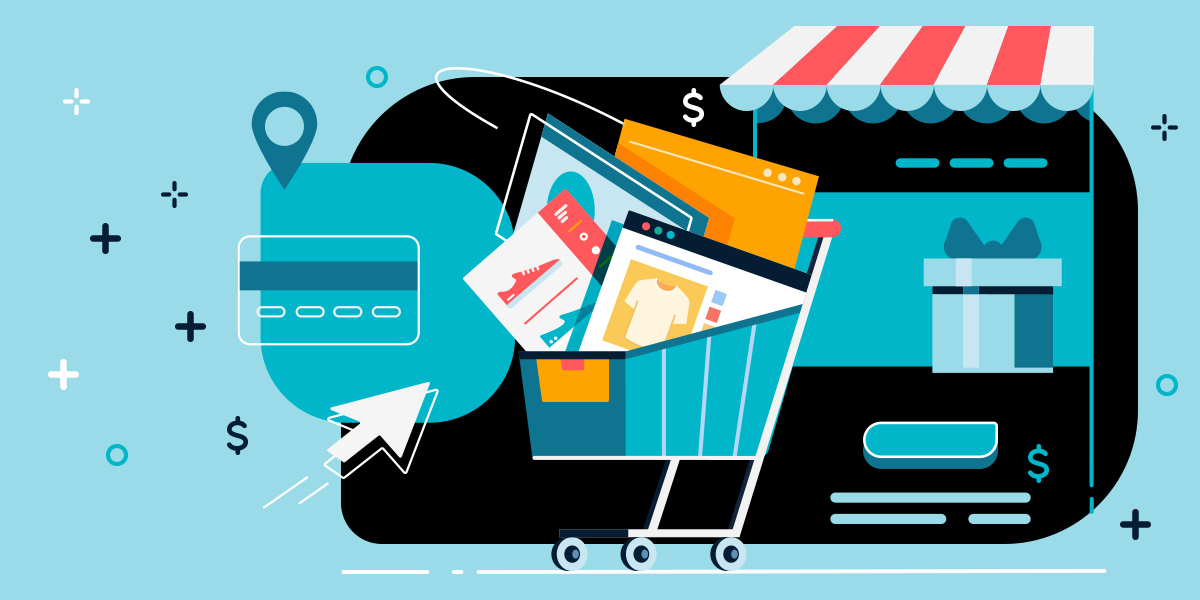
Using Payment Data to Optimize Gas Station Operations
Turn your gas station’s payment transactions into insights that improve staffing, inventory, promotions, and customer satisfaction.

Picture this: You’re cozied up on your couch browsing through different apps and channels looking for a binge-worthy show. An email notification pops up on your phone—it's a promotional campaign for a Black Friday sale. Now you’re distracted and you’ve started scrolling through your phone to add your favourite winter jacket to cart. Whatever happened to ‘big girl’ purchases on the laptop? Now, you’re a ‘smart girl’ making a purchase from your mobile phone.
Today, the most convenient and accessible way to shop is right in the palm of our hands. From the comfort of our couches, beds, subway rides or even the grocery store parking lot, we can browse through endless websites, compare prices, and snag the hottest deals with just a few taps on our smartphones.
Did you know 91% of customers make online purchases using their smartphones?1
According to Adobe Analytics2, mobile shopping is set to dominate remote spending, with an anticipated 53.2% of purchases being made on smartphones. This marks a significant milestone, as it surpasses desktop shopping for the first time.
For retailers, this shift to mobile shopping presents both a challenge and an opportunity. On the one hand, they must adapt their websites and apps to provide a seamless and engaging mobile experience. On the other hand, those who embrace mobile-first strategies can reap the rewards of increased sales, customer loyalty, and brand recognition.
Dive into the mobile-first world of Black Friday and Cyber Monday and explore the strategies that you can implement to maximize your sales and capitalize on this growing trend. Get ready to discover how to make the most of the biggest shopping days of the year.
Did you know that a website that loads in under three secondshas a conversion rate 5x higher than a site that loads in 10 seconds?3
Your website is your digital storefront. Like physical property, it needs to look good and run well in order to attract customers. Work with your web team and/or leverage optimized website templates, and focus on mobile optimizations.
Use a responsive design framework: A responsive design framework is a set of guidelines, tools, or libraries that help developers create websites that adapt seamlessly to different screen sizes and orientations. This means that whether a user is viewing your website on a desktop computer, a tablet, or a smartphone, they'll always have a consistent and optimal experience. Bootstrap, Foundation, or Materialize are popular choices to create a responsive framework.
Test your website on a variety of devices: Use tools like Google Developer Tools or BrowserStack to simulate different screen sizes and orientations to ensure they work properly on different screens.
Prioritize mobile-first design: Design your website for mobile screens first and then adapt for larger screens.
Optimize images: Heavy image files slow down the site loading speed. Use appropriate file formats (e.g., JPEG, PNG, WebP), compress images, and resize them to fit the screen.
Minimize code: Remove unnecessary code, minify CSS and JavaScript files, and combine files where possible to improve page loading speed.
Simplify your menu structure: The easier the website is to navigate, the longer a customer will stay on it. Use a clear and concise hierarchy to make your website user-friendly.
Consider using a hamburger menu: Have you ever noticed the three horizontal lines on the top left or right corner of a website? That’s called the hamburger menu. This can help declutter your navigation on smaller screens.
Ensure elements are easy to tap: Make it easy for visitors to tap on different elements on your page by using a minimum tappable area of 44 pixels to make buttons and links easy to target.
On average, mobile apps convert 157% higher than the mobile website.4
Create a sense of urgency: Limited-time offers, and early access promotions are powerful tools for driving app downloads and purchases. Create a sense of urgency to motivate users to take action before the opportunity expires.
Personalize offers: Personalization is key to driving customer engagement and increasing sales. By leveraging data on user preferences and purchase history, you can offer highly relevant and personalized deals that are more likely to resonate with individual customers.
Use push notifications effectively: Push notifications can be highly targeted and personalized, delivering content that is relevant to the user's interests or behaviour. This increases the likelihood that the user will engage with the notification. Send timely and relevant push notifications including a clear call to action, prompting the user to take a specific action, such as making a purchase, opening an app, or visiting a website. But try to avoid spamming users.
Integrate with popular payment gateways: To facilitate in-app purchases, it's essential to integrate with reliable payment gateways such as Moneris Gateway.
Provide a seamless checkout experience: Reduce the number of steps required to complete a purchase. The fewer clicks, the better. Ensure that the checkout process is clear and easy to understand. Avoid overwhelming users with unnecessary information. Not every user likes to sign in and fill in their details. Offer guest checkout allowing users to make purchases without creating an account, making the process even more convenient.
Offer one-click checkout for returning users: For returning users, offering one-click checkout can significantly speed up the purchase process. This feature stores customer payment information securely, allowing them to complete purchases with a single click.
Did you know that using payment methods such as digital wallets – can help increase conversion rates by as much as 50%?5
Offer multiple mobile payment options: To provide a seamless and convenient shopping experience, it's essential to accept various payment methods including Apple Pay, Google Pay, in addition to credit and debit cards.
Consider using tokenization: Tokenization replaces sensitive card data with unique tokens, reducing the risk of data breaches and fraud. It can speed up transactions and improve the overall user experience.
Use SSL encryption: Secure Sockets Layer (SSL) encryption ensures that customer data is transmitted securely over the internet, preventing it from being intercepted by unauthorized parties.
Comply with industry standards: Adhere to the Payment Card Industry Data Security Standard (PCI DSS) to protect cardholder data.
Regularly update your payment processing software: Regularly review and implement security patches and updates recommended by the software provider.
Avoid third-party platforms: If possible, process payments directly on your website rather than redirect users to external payment portals. This can reduce the risk of data breaches and provide greater control over the checkout process. If you must use a third-party gateway, ensure it has a strong reputation for security and compliance such as Moneris Checkout.
Did you know that 54% of social media users use social media to research products, and 71% are more likely to purchase products and services based on social media referrals?6
Use high-quality images and videos: Use high-resolution images that are compressed for faster loading times on mobile devices. Choose video formats that are compatible with mobile devices, such as MP4.
Vertical orientation: Consider creating content specifically for vertical viewing with a vertical aspect ratio, such as 9:16 or 4:5, as this is the most common orientation for smartphones. Vertical content is more naturally aligned with how people hold their phones, providing a better user experience.
Integrate your product catalog with social media platforms: Allow users to browse and purchase products directly from your social media posts, eliminating the need to navigate to your website.
In-app shopping features: Utilize platform-specific features like Instagram Shopping, Facebook Shop, or Pinterest Catalogs to showcase your products and make them easily accessible.
Product tags: Use product tags and shoppable links to highlight specific products within your posts, making it easy for users to identify and purchase them.
On average, 38% of customers have purchased an item after a good live chat session.7
Consider offering phone support: Phone support provides a more personal and interactive way for customers to get help. It allows for deeper conversations and problem-solving. Provide phone support for addressing complex issues that may require more in-depth explanations or troubleshooting.
Use automation where appropriate: Use chatbots or automated responses to handle common inquiries and provide quick answers to frequently asked questions.
Use live chat or messaging apps: Live chat allows customers to connect with a support representative in real-time, providing immediate answers to their questions or concerns. Integrate with popular messaging apps like WhatsApp or Facebook Messenger to meet customers where they are.
Use live chat software with helpful features: Use automated responses to handle common inquiries and provide quick answers to frequently asked questions. Integrate your live chat software with your knowledge base to allow agents to quickly access relevant information. Use post-chat surveys to gather feedback on the customer's experience and identify areas for improvement.
Provide a user-friendly chat interface: Create a chat interface that is easy to navigate and understand. Provide clear and concise information about your products, services, and support options.
Monitor your social media channels regularly: Utilize social listening tools to track mentions of your brand, products, or industry keywords. Monitor your social media channels in real-time to identify and address any issues that may arise.
Respond promptly and professionally: Aim to respond to inquiries within a reasonable timeframe, ideally within a few hours. Maintain a professional and courteous tone in your responses, even when dealing with negative feedback. Show empathy and understanding towards customers' concerns, demonstrating that you value their feedback.
As technology continues to evolve, we can expect to see even more innovative mobile shopping experiences in the future. By implementing mobile-first strategies, you can foster customer loyalty and retention and ensure that your brand is well-positioned to capitalize on the opportunities presented by not just Black Friday and Cyber Monday and throughout the holiday shopping season.
Remember: The key to success is to put yourself in the shoes of your customers and create a shopping experience keeping their shopping habits and preferences in mind.
_______________________________________________________________________________

Turn your gas station’s payment transactions into insights that improve staffing, inventory, promotions, and customer satisfaction.

In this guide, we’ll walk you through the types of content that work best for SMBs and give you blog topic ideas you can use today.

Learn how seamless payments, loyalty programs and personalized service can turn first-timers into regulars.

Outdated restaurant POS systems slow service and frustrate guests, while modern integrated solutions make payments fast, secure and effortless.